
Charles Sparrow at the helm with brother Tom crewing, sailing the second VJ built, ‘Chum’ on Sydney Harbour at Vaucluse 1932. Chum’s chines were drawn one inch wider than ‘Splinter’ which Charles said was a little tippy and unstable, and all the later boats were built to plans based on ‘Chum’. Photo courtesy of Graeme Andrews

Vaucluse 12ft Amateur Sailing Club opening 1930. This clubhouse was where ‘Splinter’ and ‘Chum’ were built by Sil Rohu, Charles Sparrow, Frank Sargent and R Banks
Photo above from 1934 courtesy of Howard Ash (please see Photo Gallery for more Howard Ash VJ photos)
(Please click on images to enlarge)
This original VJ plan including its materials specifications sheets was given to Greg Fryer when he visited Charles Sparrow in January 1994. Charles thought that this plan would have been from about 1938.
6 pages of materials specifications and building/rigging guide accompanied the plan. Charles did not mention to Greg whether these sheets were the same age as the above VJ plan but it would seem likely that they are and that they were the originals which accompanied the plan.
This also seems likely because the sheets contain 3 pages of VS building instructions and discuss the reasons for the designing of the VS which occurred in 1936. Because the VJ had a competition age limit of 18, Sil Rohu considered it important to have another boat designed for the boys over that age and also as a father/son boat.
(The VJ materials specifications and building/rigging guide sheets from the 1938 plan are below the VJ Origins section, including Charles Sparrow’s 1938 VS specifications sheets)
VJ Origins by Greg Fryer:
The Vaucluse Junior or VJ, is one of the great icons of Australian sailing. The VJ according to marine historian Graeme Andrews, changed the sailing scene in Australia radically and immediately, and its effect has been felt for generations since the boat’s introduction in August 1931.
The VJ was the concept of Sylvester (Sil) Rohu who was a founding member of the Vaucluse 12 ft Amateur Sailing Club in 1926, and who owned a prominent sporting store in Elizabeth Street Sydney from 1919 until his death in 1945.
Sil Rohu was a founding member of the Vaucluse 12 ft Amateur Sailing Club in 1926 and sailed regularly with Charles Sparrow who was 22 years his junior.
Sil was a sailing boat and fishing enthusiast, and his gunsmith and fishing supplies sports store ‘Sil Rohu’ became known throughout the country due to Sil’s entrepreneurial and promotional flair. Charles Sparrow told me in 1994 that Sil would often bring out American film celebrities for deep sea game fishing promotional events and had a knack for this kind of promotion.
Prior to the invention of the VJ there were no sailing boats that were designed specifically for children and teenagers so they could learn to sail. Boys would sometimes learn to sail as ‘bailer boys’ in the open skiff classes, but others would venture out onto Sydney Harbour in home made ramshackle ‘sailing canoes’ made from roofing iron and held together with pitch wood and nails usually with a bedsheet for a sail. These were anything but seaworthy and had mixed results, and Sil was concerned by the lack of formal sailing activites for children and teenagers and also by the lack of suitable boats for them to learn to sail on.
During a short period of illness in 1931, Sil crystallised his vision for a sailing boat which would be designed specifically for children and teenagers as a training and racing craft.
Sil Rohu’s vision for the VJ required 3 things:
1. It was purposely designed for 2 children or teenagers so they could learn to sail and learn to race
2. The boat would be unsinkable and easy to right after a capsize (most other craft at the time such as the open skiffs had to be towed ashore after a capsize)
3. The boat would be made at home by a boy and his Dad and would be inexpensive to construct (in the 1930s the boat cost 5 pounds 7 shillings and sixpence, and the sails cost 3 pounds 5 shillings)
In 1931 during the depths of the Great Depression Sil saw all around him the effects of social upheaval. Work was scarce with over 20% of Sydney’s workers unemployed, and poverty and hardship was everywhere around. This must have been disturbing for a community minded man like Sil Rohu.
Charles Sparrow said in a conversation with me in 1994 that Sil was very concerned that the boys and teenagers had little to do with their time during the Great Depression and that lack of activities and structure was causing many social problems. Charles said that it was Sil’s goal that the VJ should be built at home for a low cost and that family and social cohesion would be strengthened by the boys being actively involved in an organised healthy outdoor sport.
Charles Sparrow was unemployed at the time he designed the VJ in 1931, with his shipwright apprenticeship at the Cockatoo Island Dockyards coming to an end in 1928. He had several jobs from 1928 until 1931 including State Dockyard Newcastle, Morts Dock in Sydney, Australian Steam Navigation Company, and Holden Body Builders.
After Sil commissioned him to design the boat, Charles took only 7 days to produce the final drawings. In a generous gesture, Charles donated the money earned from his design to the Vaucluse Junior Amateur Sailing Club.
The first VJ prototype called ‘Splinter’ was built in the clubhouse of the Vaucluse 12 ft Amateur Sailing Club by members Sil Rohu, Charles Sparrow, Frank Sargent and R. Banks and was launched on 1st May 1931. It proved to be a little ‘tippy and unstable’ as Charles told me. He then widening the chines by one inch either side to arrive at the final design.
The final version prototype called ‘Chum’ was again built by Sil Rohu, Charles Sparrow, Frank Sargent and R Banks in the Vaucluse 12 ft Amateur Sailing Club clubhouse and was launched in August 1931. Frank Sargent and R. Banks were instrumental in the building of these first two prototype VJs and presumably were experienced in workworking, along with Charles who was an experienced shipwright. Sil Rohu bankrolled the project and paid for the design costs plus all materials for these first two boats from his own pocket.
Charles Sparrow told me 1994 that at the time he designed the VJ, the well known Sydney boatbuilding company Halvorsen Bros was also working on a similar project and showed a prototype at a Boat Show, so therefore the race was on to produce a suitable boat which would capture the public’s imagination.
Once the final prototype VJ ‘Chum’ was launched in August 1931, the idea caught on rapidly and numbers began to grow. Sil named the boat the ‘Vaucluse Junior’ and his concept was that the ‘VJ’ would train the youngsters up to the age of 18 when they would then graduate with accomplished sailing skills into the open 12 ft skiff class or other open skiff classes.
According to Charles it was Sil’s idea for the VJ to have a colour patch or insignia on the mainsail which served to make the boats stand out and be eyecatching when out on the harbour. This has continued to be a distinctive feature of the VJ over the years and one which contributes strong character to the boats. It is likely that Sil borrowed the idea from Mark Foy’s 18ft skiffs which had been using a colour patch on the mainsail as a promotional tool since around the early 1900s as a way of distinguishing the boats when sailing on the harbour and making the sport more interesting for spectators.
The boatshed at Sil’s house at The Crescent Vaucluse served as the first Vaucluse Junior Amateur Sailing Association headquarters, meeting place and storage shed, but soon the numbers of boats being built overcame its capacity. For a few years the VJs were housed in the nearby McKlellan’s boatshed at the south end of Kutti Beach at Vaucluse (the 12 ft Sailing Club was located at the northern end of the beach) and soon a new clubhouse was built nearby.
In October 1939 a new clubhouse in Marine Parade was built for the Vaucluse Amateur Sailing Association’s VJ and VS boats, and was opened by the Postmaster-General Eric Harrison. Construction of the clubhouse was substantially funded by Sil Rohu’s sailing friend Norman Nock who owned the well known George Street Sydney hardware store Nock and Kirby’s.
The photos below were taken on 23 November 1938 at Kutti Beach Vaucluse, close to the Vaucluse 12ft Amateur Sailing Club.
They feature 4 VJs rigged on the beach, amongst which is the very first VJ Commonwealth Champion ‘Revival’ no 43 skippered by John ‘Choco’ Winning. The photos were taken only weeks before John would have won the Championship, and it is very likely that he is featured in several of these photos.
It is very likely to be John ‘Choco’ Winning who is the person seen in three of the photos silhouetted by the mainsail standing on the deck of his boat Revival no 43.
Further information about the boats pictured above is from John Fairfax, Jason Smid and Bob Chapman:
No 37 is Gem, the 2nd Commonwealth Junior Champion. Skipper of Gem, W. Hastie, is Norman William Hastie (1921 – 2014) from Vaucluse, known as Bill Hastie.
Jason’s VJ records say that no 42 is Mayfair VYC and no 46 is Native Teralba but the boat may have been called something else before.
Photos are from the State Library collection: https://collection.sl.nsw.gov.au/record/1l42jAV1/OMpEad2Mejwmp#viewer
Copyright status : Photographs in this collection created before 1955 are all out of copyright. Photographs created after 1955 are in copyright.
Copyright holder : State Library of New South Wales
Rights and Restrictions Information : May be copied for research and study purposes and publication
Please acknowledge: : Mitchell Library, State Library of New South Wales and Courtesy ACP Magazines Ltd.
During the 1940s, 1950s and 1960s the leading Sydney hardware store Nock and Kirby’s sold the VJ plans plus all the materials needed to build the boat.
Many years later the Vaucluse Amateur Sailing Club changed its name to the Vaucluse Yacht Club.

Vaucluse Amateur Sailing Club VJs and VSs in the 1940s – view from Gibsons Beach stretching up to the Vaucluse Yacht Club
Please also see information from the Powerhouse Museum which has on display the 1955 VJ ‘Giselle’. Its VJ article features information from marine historian Graeme Andrews:
http://www.powerhousemuseum.com/collection/blog/index.php/tag/vj/
========================================================
From Greg Fryer’s VJ Assn records:
Letters from Sil Rohu to Charles Sparrow 1933 to 1936:
———————————————————————————————–
VJ materials and specifications sheets included with Charles Sparrow’s 1938 plans:
After the final prototype version VJ “Chum” was launched in August 1931 the VJ enjoyed rapid success and growth in numbers around Sydney Harbour and elsewhere around Australia. A few years later Sil Rohu then had a ‘problem’ on his hands to solve when the VJ age limit meant that many of his enthusiastic VJ sailors were barred from competition once they turned 18. In 1936 Charles Sparrow was asked by Sil to design the VS.
VS 1938 specification sheets:
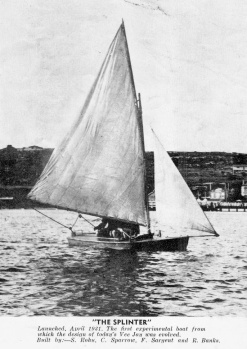
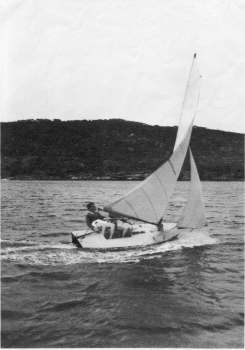
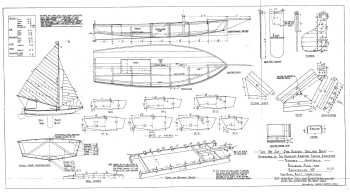

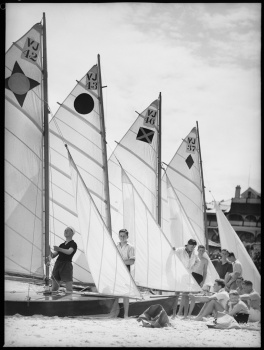

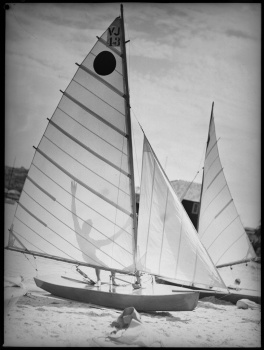
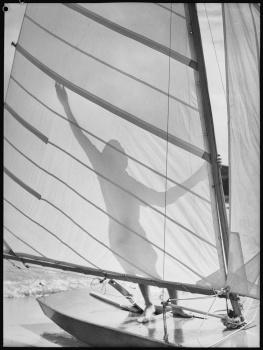
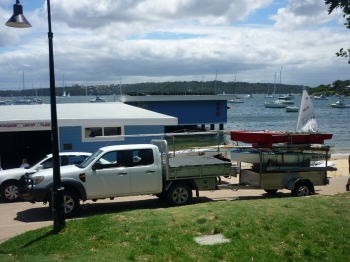
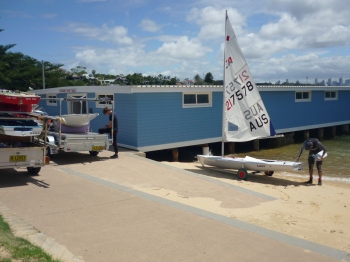
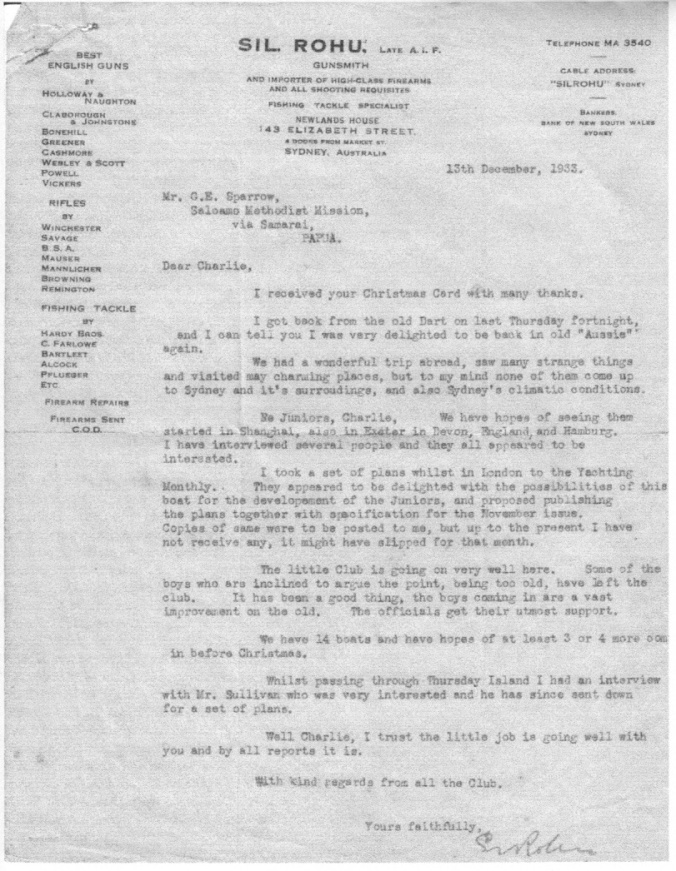
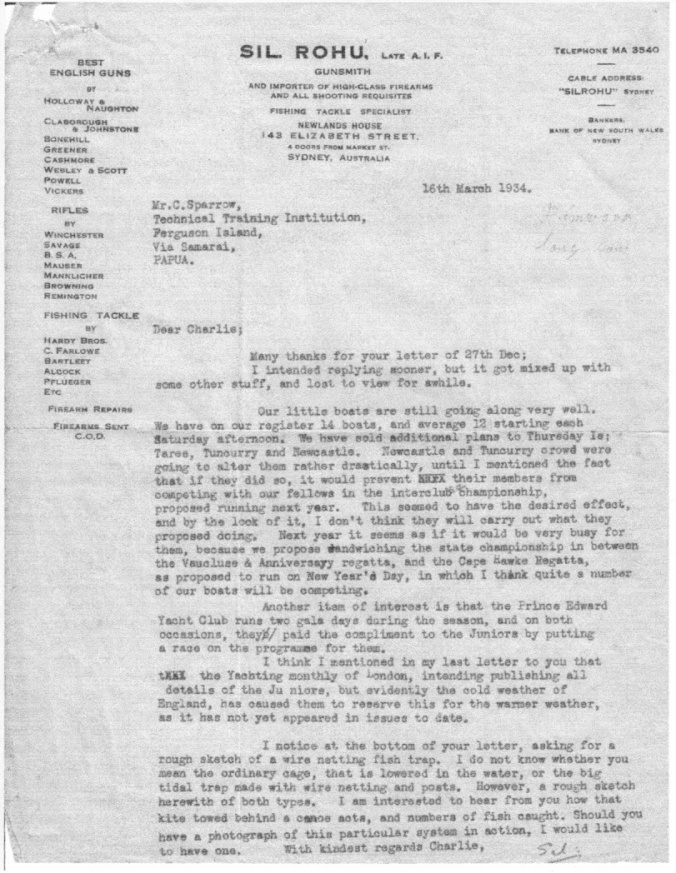
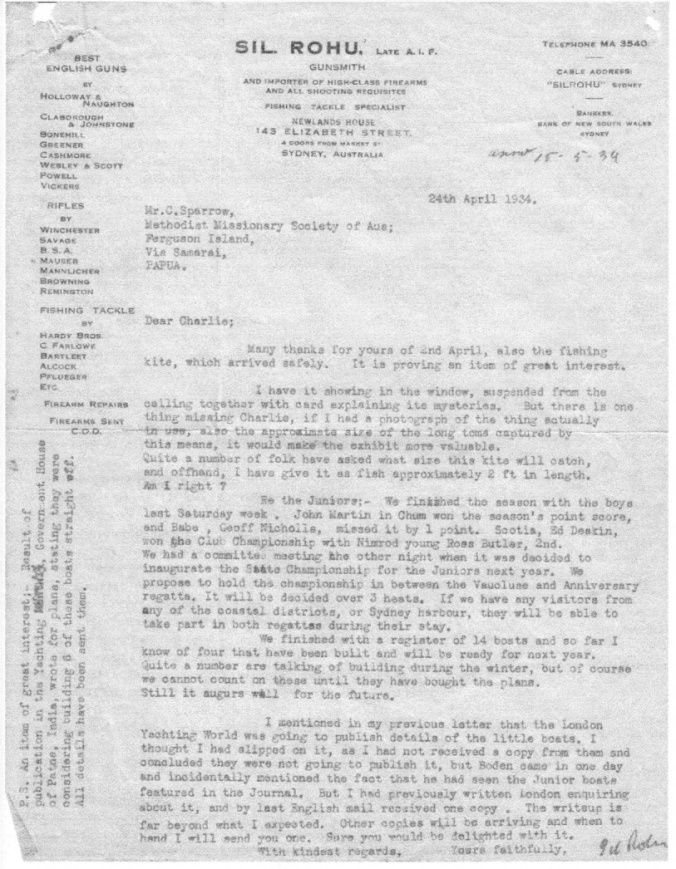
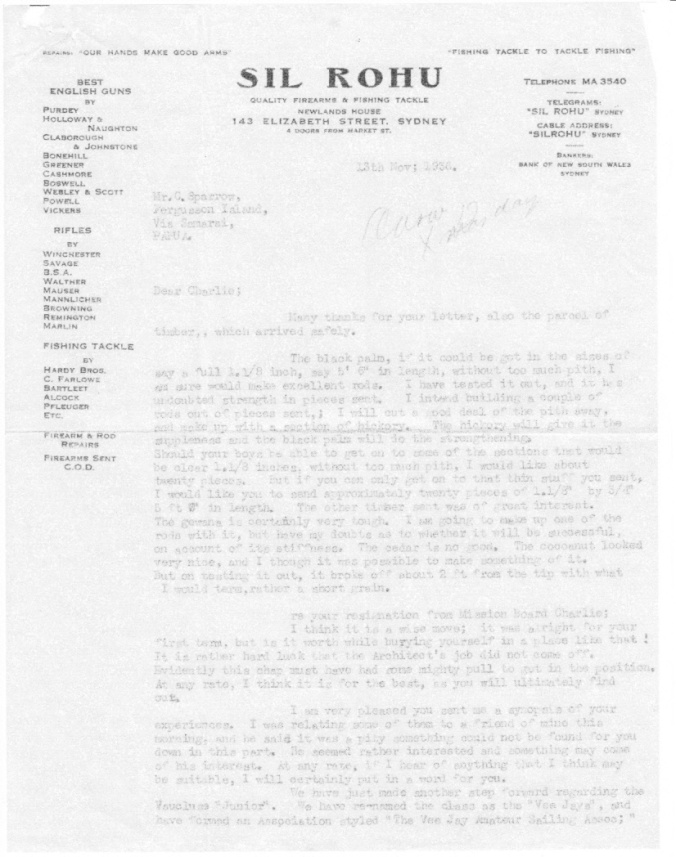







Hi Guys, Just letting you know that Sil Rohu (Sylvester Edwin Rohu) was of Irish, not Scandinavian descent. He was the eldest son of Henry Bonaventure Rohu and Ada Jane Tost. Henry hailed from Ireland and Ada Jane from England. They set up a curiosity shop in Sydney, called the Tost and Rohu Museum. It was described as ‘the queerest shop in Australia’. See http://adb.anu.edu.au/biography/rohu-ada-jane-13285
Henry Rohu was a bit of a rogue and during his life claimed to be from Scotland and Sweden. He left his wife and children at the turn of the 20th century, moved to England, married again and set up a taxidermy business in Bournemouth.
Great site though. Thanks for all the additional info. Peter Johnson (married to Gwenda Rohu, great granddaughter of Henry’s brother, Alfred)
Hi Peter,
Thanks for your information on Sil Rohu, it is much appreciated. In January 1994 when I met Charles Sparrow, he told me that he thought Sil was of Scandinavian descent but obviously must have had the information incorrect.
In recent months the VJ Association has been handed many old records from Alan Kildey the former long serving Association registrar, and these documents shed light on the origins of the VJ and include much correspondence between Sil and Charles from the 1930s. Over coming months we will present more of this information on the website.
Hooroo, Greg
Hi Greg,
Great work digging into the past! Must say it humbled me when I saw that photo of Sil Rohu and the AIF boys going to the Western Front in 1916.
The story of the VJ reminds me of the Mirror Dinghy on this side of the world.
Peter
My father Bill Jacobs raced a VJ named “Chum II” in Sydney as a teenager in the 1940s before moving back to the states to go to college, have a family and enjoy a lot of small boat sailing before dying way too young in 1979. I have a silver trophy with his name on it for the 1947 – 1948 ES VJ & VS Sailing Club VJ Championship. I also have a couple of pictures of him and His boat, none under sail. Is there anybody around who might remember sailing with him or his younger brother Tom? I know it was a long time ago. Anybody who remembers anything about VJ sailing in Sydney in the mid-1940s and is inclined to get in touch can contact me at tvjacobs@gmail.com.
What a trip down memory lane … Middle Harbour VJ Club at the Spit round the late fifties, early sixties. Afternoon southerly buster swinging round and over middle head, waves braking on Grotto, big fat swells rolling toward the Spit but never making it. Singlehanded, toes on gunnel, kite cleated off, working the main and feeling the pressure on my rudder surfing the incoming swells, at times only a third of my trusty VJ swell wetted, rooster’s tail tearing away.
What an amazing dinghy … all elements encapsulated in a thriling sailing experience. I will always cherish what sailing my VJ meant to me … and my dear old Dad who harangued mercilessly my penchant for Chinaman’s lee. Ric.